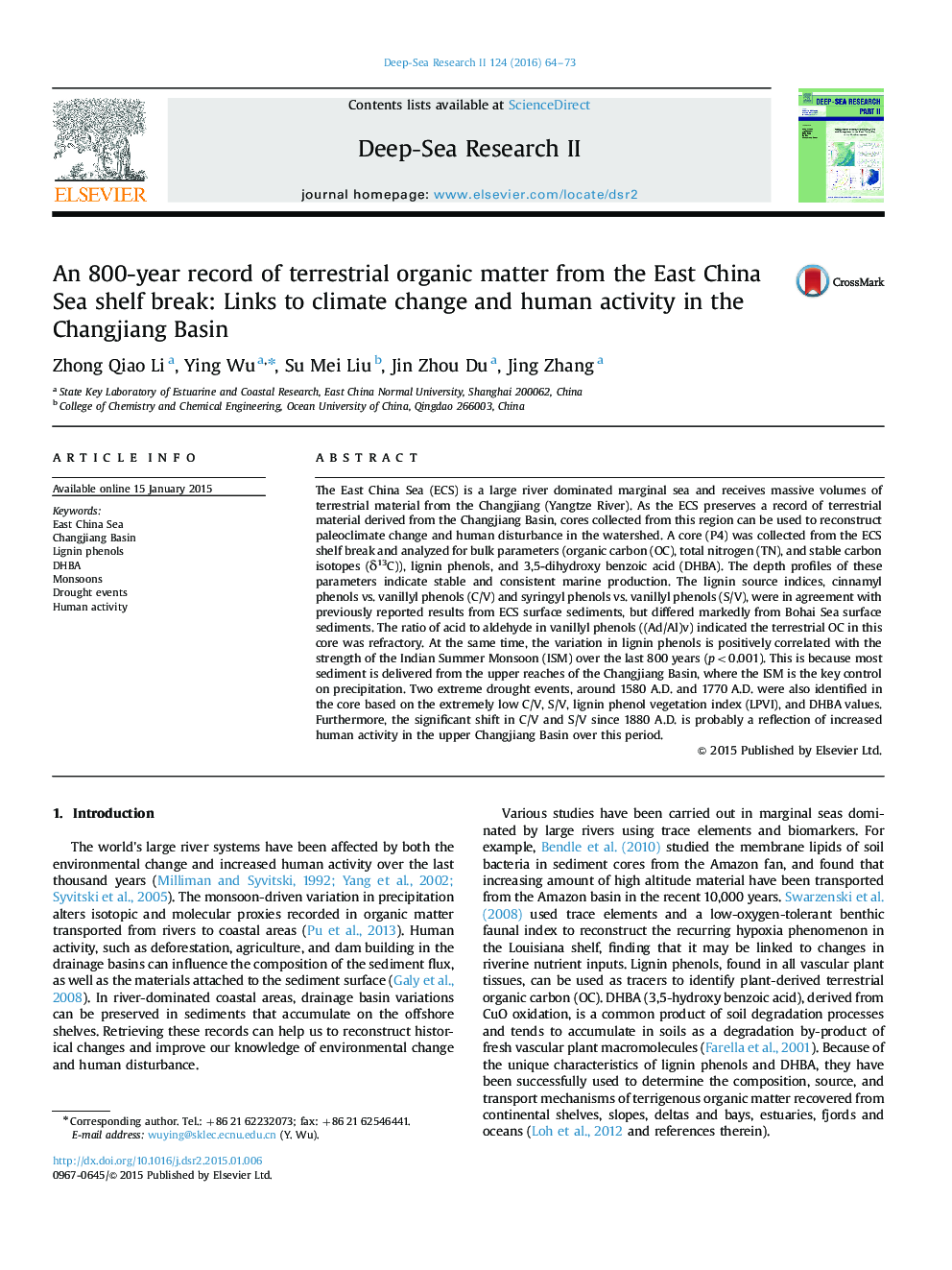| کد مقاله | کد نشریه | سال انتشار | مقاله انگلیسی | نسخه تمام متن |
|---|---|---|---|---|
| 4536128 | 1626417 | 2016 | 10 صفحه PDF | دانلود رایگان |
• We collected a core from the shelf break of East China Sea to study its links to the climate change and human activity.
• The content of terrestrial organic matter (TOM) was mostly controlled by the strength of Indian Summer Monsoon.
• The composition of TOM was influenced by both climate change and human activity.
The East China Sea (ECS) is a large river dominated marginal sea and receives massive volumes of terrestrial material from the Changjiang (Yangtze River). As the ECS preserves a record of terrestrial material derived from the Changjiang Basin, cores collected from this region can be used to reconstruct paleoclimate change and human disturbance in the watershed. A core (P4) was collected from the ECS shelf break and analyzed for bulk parameters (organic carbon (OC), total nitrogen (TN), and stable carbon isotopes (δ13C)), lignin phenols, and 3,5-dihydroxy benzoic acid (DHBA). The depth profiles of these parameters indicate stable and consistent marine production. The lignin source indices, cinnamyl phenols vs. vanillyl phenols (C/V) and syringyl phenols vs. vanillyl phenols (S/V), were in agreement with previously reported results from ECS surface sediments, but differed markedly from Bohai Sea surface sediments. The ratio of acid to aldehyde in vanillyl phenols ((Ad/Al)v) indicated the terrestrial OC in this core was refractory. At the same time, the variation in lignin phenols is positively correlated with the strength of the Indian Summer Monsoon (ISM) over the last 800 years (p<0.001). This is because most sediment is delivered from the upper reaches of the Changjiang Basin, where the ISM is the key control on precipitation. Two extreme drought events, around 1580 A.D. and 1770 A.D. were also identified in the core based on the extremely low C/V, S/V, lignin phenol vegetation index (LPVI), and DHBA values. Furthermore, the significant shift in C/V and S/V since 1880 A.D. is probably a reflection of increased human activity in the upper Changjiang Basin over this period.
Journal: Deep Sea Research Part II: Topical Studies in Oceanography - Volume 124, February 2016, Pages 64–73
